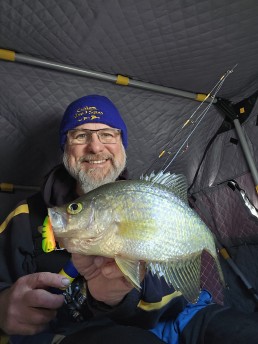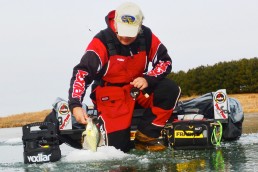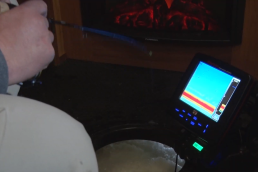Slamming Shallow-Water Crappies and Pike Through the Ice
SHARE THIS POST
The last couple of years have provided some great ice fishing for me, especially in shallow water less than 10 feet deep. It is here that bluegills, perch, crappies and pike roam freely and are readily caught, especially at first ice.
Old-school flutter spoons still produce. Standbys like Demons, 2-Spots, Rockers, Demon Jigging Spoons, Lil’ Cecils and Slender Spoons are killer producers in shallow, weedy areas. Tungsten is most effective in clear water where you can present a tiny offering with enough weight to get quickly down into the strike zone.
Most of the time, though, I’m fishing in areas that have about a foot of visibility, so I’m usually fishing with a little lead or brass spoon that has a slower fall and a nice flutter. It’s way easier for a fish to suck in a lightweight jig or spoon with little or no hesitation.
When fishing first-ice, shallow water situations, I had always (in the past) focused on smaller presentations because I believed that these fish were skittish, which they often are. Last year, as I was fishing one of my favorite, early-season backwaters, which had become a high-traffic community spot, I watched anglers pulling in some nice pike on tip-ups.
This is nothing new in Wisconsin, as most anglers will set out a tip-up or two and then jig for bluegills. I never really cared much for tip-up fishing, but in this case, most of these fish were nice size, and I knew they would put up a great fight on a little rod. So, I decided to focus my efforts on pike.
At this point, let it be known that I like to view my Livescope while ice fishing. Many anglers will use Livescope for searching only, and then switch to a Vexilar while fishing. They believe Livescope deters fish away from their hole because of the higher frequency. Although this is true a lot of the time, I just love to watch how fish react to my lure in real time and can learn so much more with a Livescope than staring at the lines on a Vexilar.
One of the things you notice while panfishing is that you can be slamming fish… and then the bite shuts off. Fish are moving around your hole, three or four at a time, and fishing is good. When the fish are gone, enterprising anglers then search for fish with their Livescope and quickly change holes. But now that I’ve gotten older and slower, I wait it out and prepare for the next run.
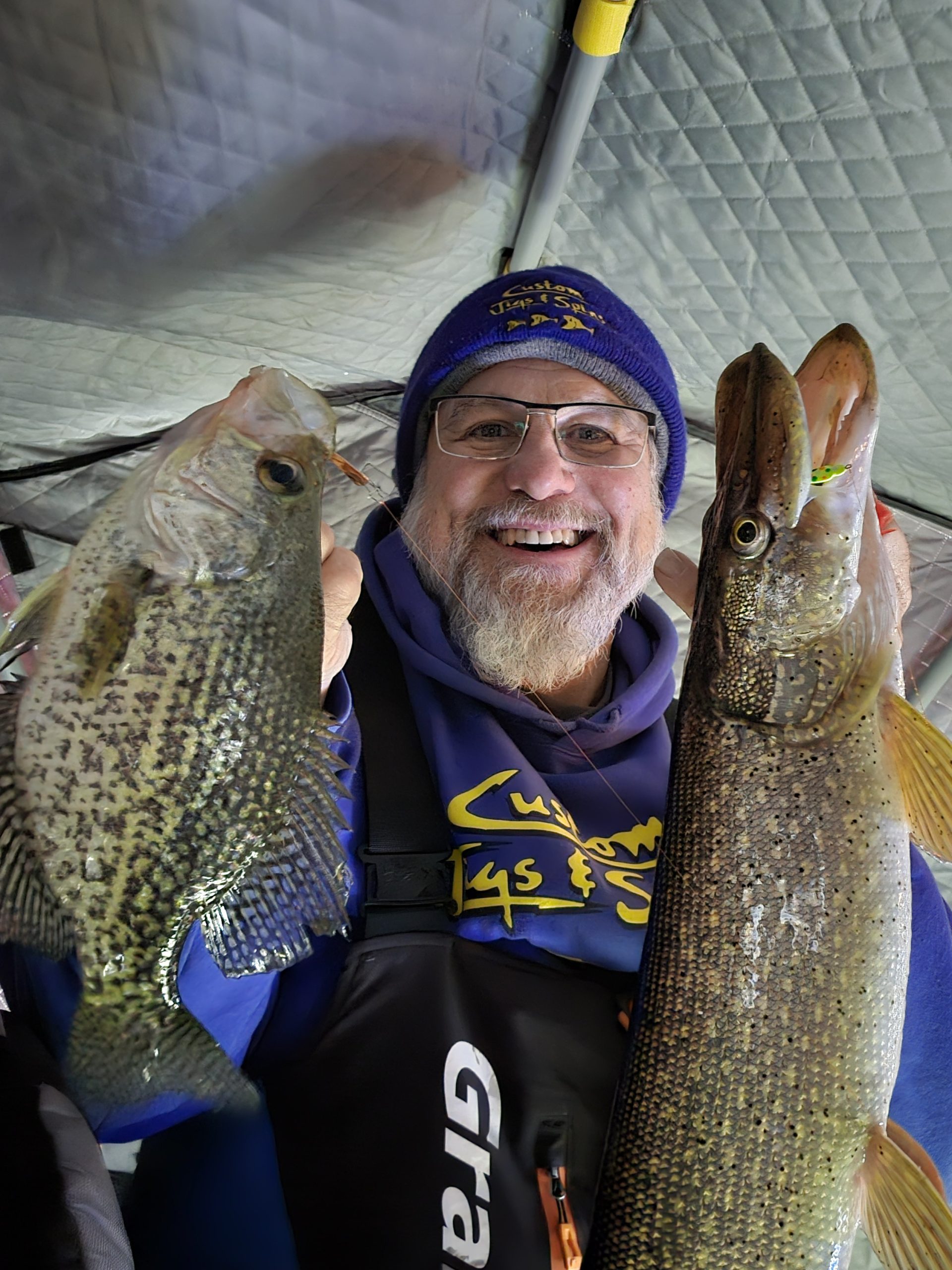
Are you enjoying this post?
You can be among the first to get the latest info on where to go, what to use and how to use it!
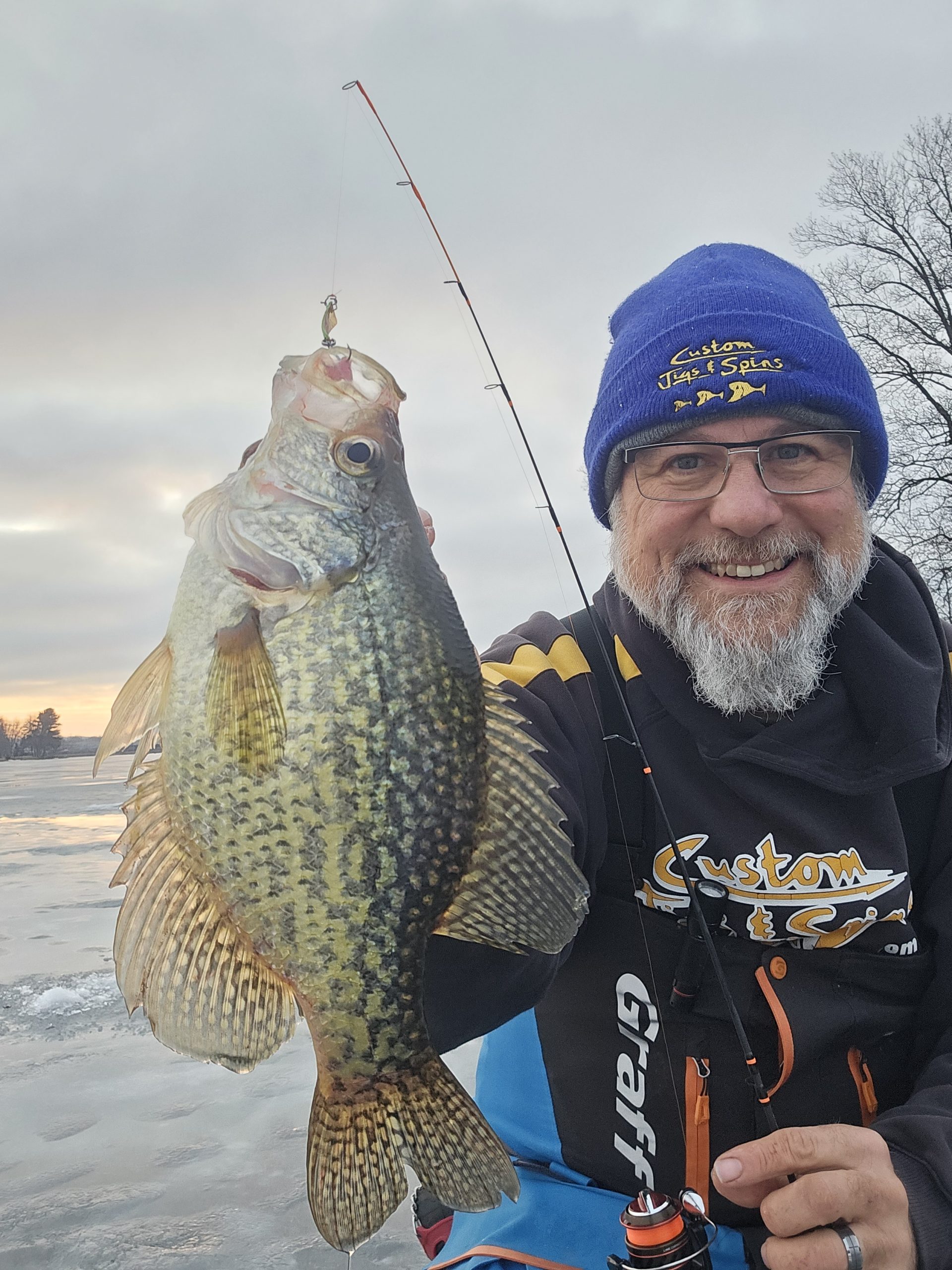
Catching multiple panfish creates a frenzy as more fish come in to investigate; and then predators move in and spook those fish down into the weeds. After a little time passes, those bluegills and crappies move right back in.
So, I started experimenting with larger lures; instead of using a 1/16-ounce Slender Spoon, I use a 1/8-ounce and even a 1/4-ounce. Instead of a size 10 Demon, I put on a size 4. I know what you’re saying, “Those are some awfully big profiles to be using in shallow water at early ice.”
You’re right!
I have several rods rigged with different sizes of lures. I’m fishing out of two holes with the Livesope in the middle, watching all the action. Another thing: I’ll fish those larger lures up higher in the water column, usually in the top third of the water. I’ve been getting some extra-large crappies, largemouth bass and pike! I even switched to a larger rod with heavier line that I usually use for walleyes, and remarkably have not spooked the crappies. They seem to get focused on the fluttering action of the Slender Spoon and Demon.
Sometimes it takes five minutes or more to tempt a fish to strike. I’m not just talking about teasing a 10-inch bluegill. I’m talking about jiggling a 1/4-ounce Slender Spoon while watching a 36-inch pike with its nose mere inches away. I’ve had them flash in from a distance, grab the spoon and run! I’ve had them ease up from another angle and I think it’s a crappie, then spin around and see that it’s another quality pike.
When using two rods, I’ll have a larger Slender Spoon with a minnow head (preferably a Rosy Red) and a Demon size 4 with a whole Rosy hooked through the dorsal on the other. I’ll change things up with a smaller Demon or Demon Jigging Spoon on different rods, but I’ll always keep that Slender Spoon on. Firetiger, orange glows, and chartreuse combos seem to work best for colors.
Just writing this article has got me so fired up about early ice (even though it’s 85 degrees outside and the middle of September), that I’ve got to organize my ice tackle box, fiddle with my ice rods and reorganize my already organized gear one more time!
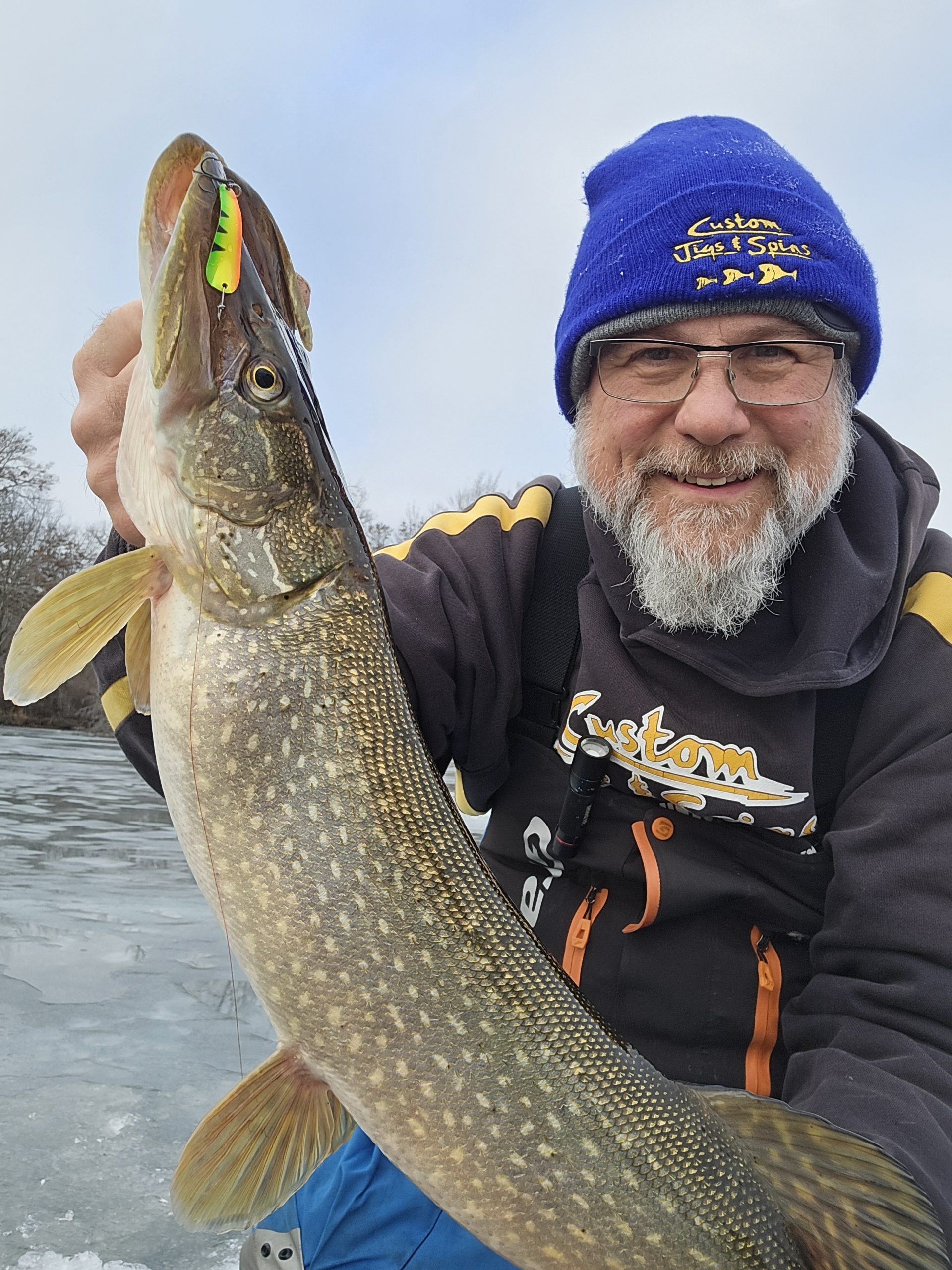
MWO
SHARE THIS POST
Did you enjoy this post?
You can be among the first to get the latest info on where to go, what to use and how to use it!
Walt Matan
Walt Matan has been a writer and television host for MidWest Outdoors for 30 years. An avid ice and open-water fisherman, he currently lives in the Quad Cities on the shores of the Mississippi River. He is the product developer and brand manager for Custom Jigs & Spins, B-Fish-N Tackle, and Rippin Lips Catfish Tackle. For more information visit customjigs.com.
